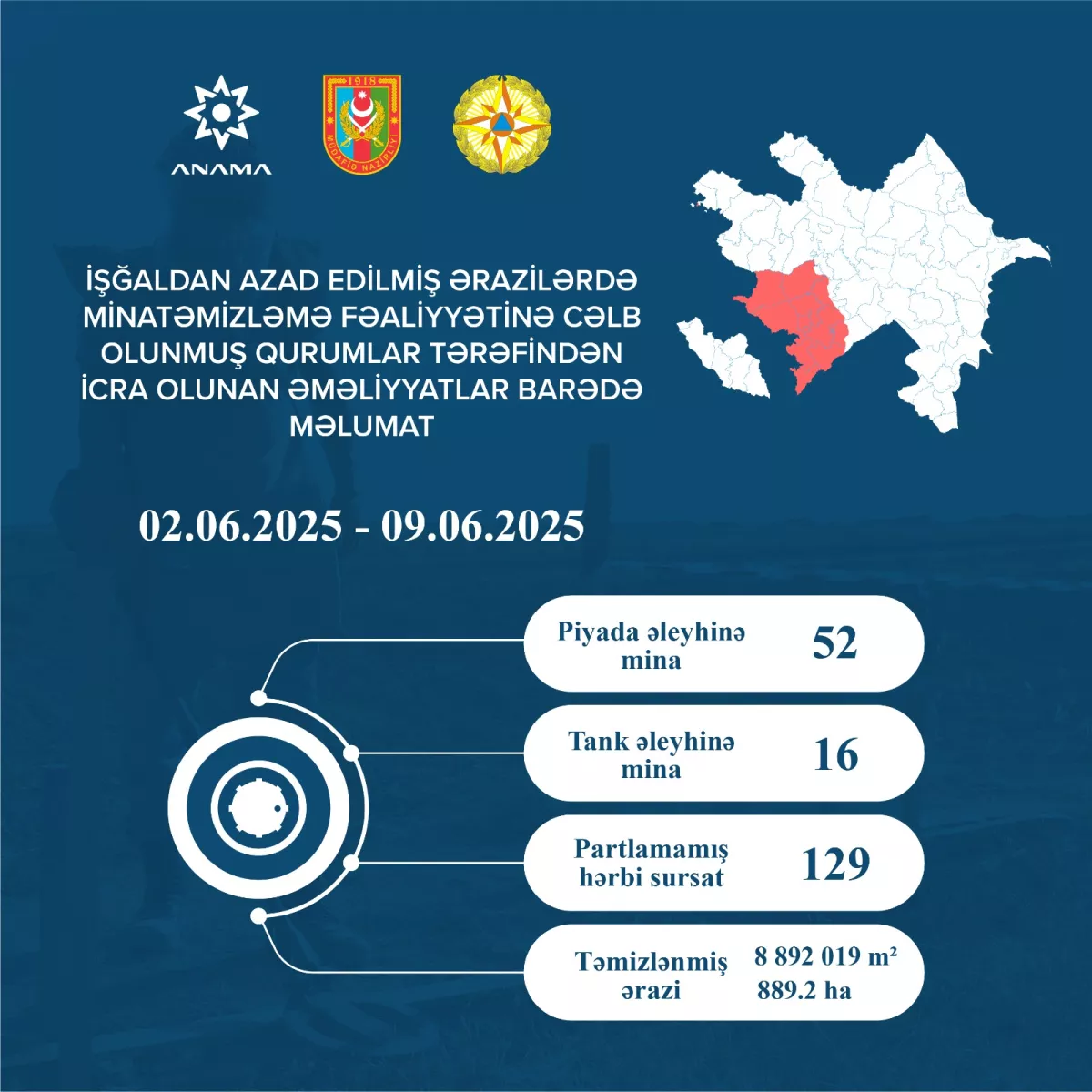Azerbaijan defuses nearly 200 munitions in liberated lands over one week PHOTO
The Azerbaijan National Agency for Mine Action (ANAMA) has reported the discovery and neutralisation of 197 explosive devices during demining operations conducted between June 2 and June 9 across the country’s liberated territories.
According to the agency’s weekly update, the munitions included 52 anti-personnel mines, 16 anti-tank mines, and 129 unexploded ordnance (UXOs), posing serious risks to civilians and reconstruction efforts. The hazardous items were located across a wide swathe of territory encompassing the districts of Tartar, Aghdara, Kalbajar, Aghdam, Khojaly, Khankendi, Khojavand, Lachin, Shusha, Fuzuli, Gubadli, Jabrayil, and Zangilan, Caliber.Az reports.
While the clearance of nearly 200 explosive hazards marks a significant milestone in the ongoing demining campaign, it also underscores the scale of contamination left behind following years of occupation and conflict.
ANAMA reported that a total of 889.2 hectares were cleared during the week, as efforts intensify to ensure the safe return of displaced persons and enable infrastructure development.

Azerbaijan continues to face the devastating legacy of a 30-year conflict and occupation by Armenia, which left about 12 per cent of its territory contaminated with roughly 1.5 million landmines and countless unexploded ordnance (UXOs). This contamination has made Azerbaijan one of the most mine-affected countries worldwide.
Since the 2020 Second Karabakh War, 397 people have been killed or injured by mines, adding to a total of over 3,400 mine victims since the early 1990s, including hundreds of children and women. Armenia’s refusal to share accurate minefield maps and the planting of mines in civilian areas have worsened the humanitarian toll.
Demining remains a critical priority for Azerbaijan, with the Azerbaijan National Agency for Mine Action (ANAMA) leading clearance efforts. So far, around 140,000 hectares have been cleared, but vast contaminated areas still pose serious risks, delaying the safe return of 800,000 displaced people. Despite significant national investment and innovative approaches like all-women demining teams, international support remains essential to fully address the challenge.
By Vugar Khalilov








